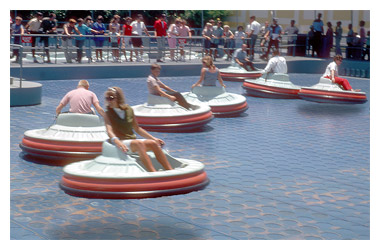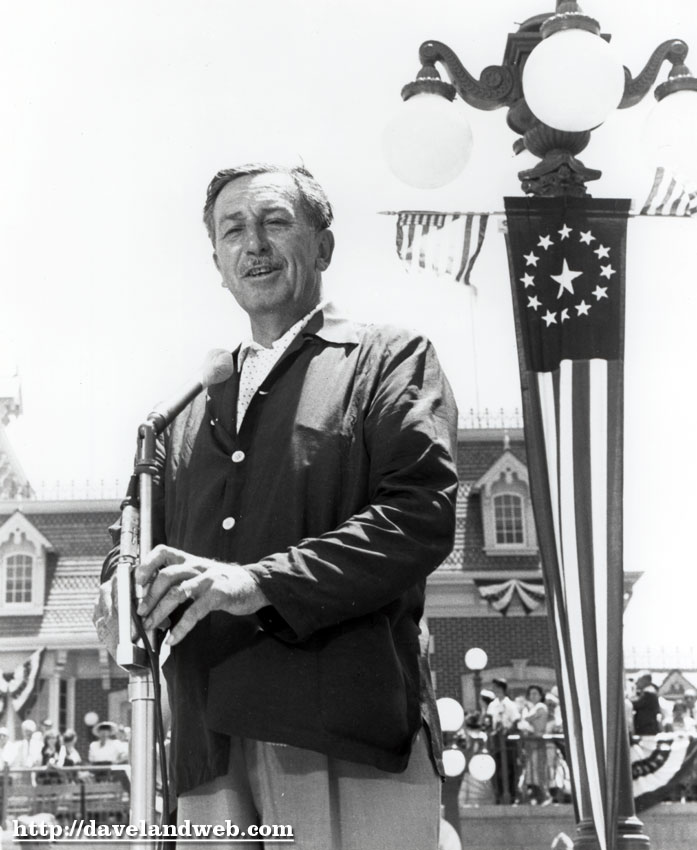“Disneyland will never be completed. It will continue to grow as long as there is imagination left in the world.” – Walt Disney
Thinking about Eric Ries‘ lean startup methodologies, it occurred to me that Walt Disney pioneered the form in 1955 with the creation of Disneyland. Let’s take a look.
Private Beta: July 17, 1955
Disneyland was officially launched in a private beta in July 1955 to 6,000 guests by invitation only. Unfortunately, those folks shared their invitation links and 22,000 extra guests showed up with forged tickets! Special guests Ronald Reagan and Art Linkletter helped Walt Disney put on a good show that was live-streamed on television.
But the park was anything but a success that first day. Ladies’ heels sunk into the asphalt slurry sidewalks in the hot July sun. A plumbers’ strike meant that only a few water fountains were operational. A gas leak closed several sections of the park.
These setbacks led Disney’s team to refer to this fateful day as Black Sunday. The opening day generated such negative publicity that Disney and his team took special care to invite the press back the next day and in the coming days to see “the real Disneyland” and see things as they had been intended.
But even if things had gone as planned, only 18 attractions were operational those first few days. Tomorrowland had just four attractions and was admittedly incomplete. Several other attractions would open later in 1955 and 1956.
When Disneyland opened in July 1955, it was literally the minimum viable product. With just $5 Million in financing, there was a lot that Walt wanted to put into the park, but there was only so much money and time.
They launched with what they had ready and took the hit for the stuff that was broken. Why? So they could learn from their customers.
Customer Development

Disney listened to his customers. This change log on the site Yesterland.com shows how much stuff opened in 1955 was eliminated or modified over the years.
New rides were added, old ones modified; others became simply obsolete or required updates. The awkward and failure-prone Flying Saucers ride was replaced in 1967 with the Tomorrowland Stage, which was in turn replaced in 1986 with the Magic Eye Theater. The “Rocket to the Moon” became the “Rocket to Mars.” The iconic Matterhorn Bobsleds ride didn’t open until June 1959, nearly four years after the park’s debut!
Disney’s guest relations department has had the benefit of hearing a huge volume of customer feedback – about which attractions people enjoy, which ones they hate, and which ones literally make them sick. With such a powerful mechanism for continually collecting feedback from millions of customers (who take pride in interacting with one of the world’s most prestigious brands), the Disney organization has benefited from a feedback cycle of continuous improvement.
If Disney and his team had gone into “stealth mode” for 55 years, could they ever have produced the park that we see today?
Build On One Success
After Disneyland was successful, and could benefit from a methodology of continuous improvement, they were able to obtain the financing necessary to build Disney World, Epcot, Euro Disneyland, Animal Kingdom, Disney’s California Adventure, and several other projects. You might think of each of these as several products in a portfolio, but they all flowed from the fundamental success of the original and the conviction that it was okay to launch with a halfway-there product in July 1955. They knew that customers would help them find the way forward.
Disneyland has always been the result of the interaction of management and customers to produce an experience that is valuable for its customers and profitable to operate.
Your software business should take the same approach. You don’t know what your customers are going to want. Launch with something workable, even if flawed. Then iterate with continuous improvements after that. Then, you and your customers will be building something valuable together.
Your product should never be completed, as long as there is imagination left in the world!


6 comments ↓
nice post!
I think listening to customers is a tricky thing to do. It takes a very skilled marketers to listen to customer's feedback and know what to do especially when an organization grows too big. Saying the customer is the 'true north' is an easy thing to say but sometimes difficult to execute on. When you get big and you have thousands of customers and hundreds of salespeople consensus building can be dangerous and eventually cripple your product development pipeline. Filtering out which features are done because they're easy to do, which features you do because your customers need them, and which features you do because your customers want them is a tricky game. If they're easy to do, beware….your customers may not want them and they could spur new problems. If your customers want them, ensure that they in fact 'need' them to remain a customer and have a positive experience.
Brian – I agree that listening to your customers, as a strategy, can be tough to implement in practice. That alone is the subject of much study.
I think in general what it requires is measurement, taking in a lot of inputs, and then synthesizing responses that incorporate some design leadership of your own.
The approach doesn't suggest abdication of design responsibility to your customers; instead it is about being open to what your customers are telling you and using that information as part of an iterative design process.
Great post Dave. I think too many people get hung up in the “I wonder if this will work” phase of things, and forget that the ONLY way to really know is to launch, listen, react, refine. Deep down I think it's all about fear of failure, if you don't try, you will never have to face failure!
Great post Dave. I think too many people get hung up in the “I wonder if this will work” phase of things, and forget that the ONLY way to really know is to launch, listen, react, refine. Deep down I think it's all about fear of failure, if you don't try, you will never have to face failure!
I never knew Disneyland opened like that. It's amazing to think of it this way. Most of the time we never see the true start of something, so we never now about the goof ups, the false starts, the fixes done before things take off. We only hear a swell story after the product and company are successful and well known. If you used the first version of TheFacebook.com, it would be so different from how we know it now, you wouldn't be able to imagine it. That is the true skill and job of the Entreprenuer, to be able to imagine the future, see that vision, and build it, one iteration at a time.
You must log in to post a comment.